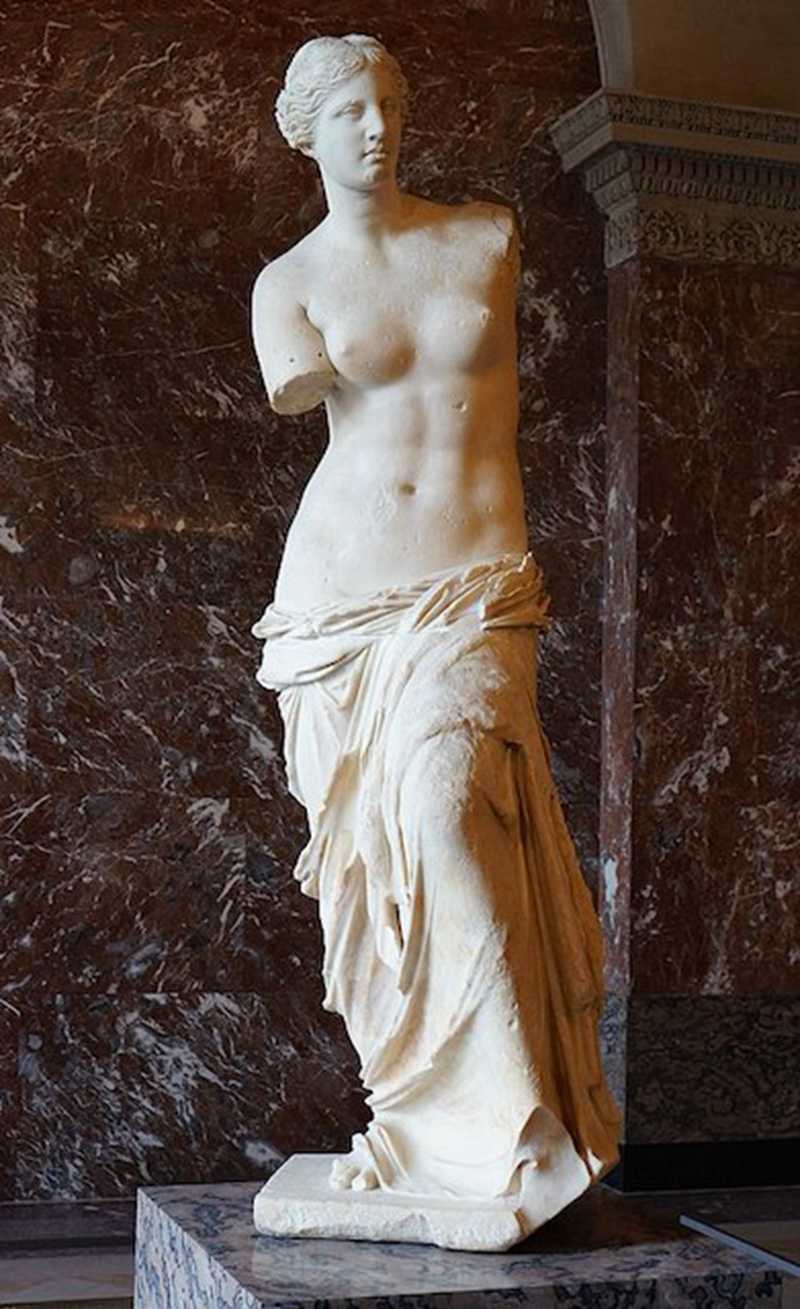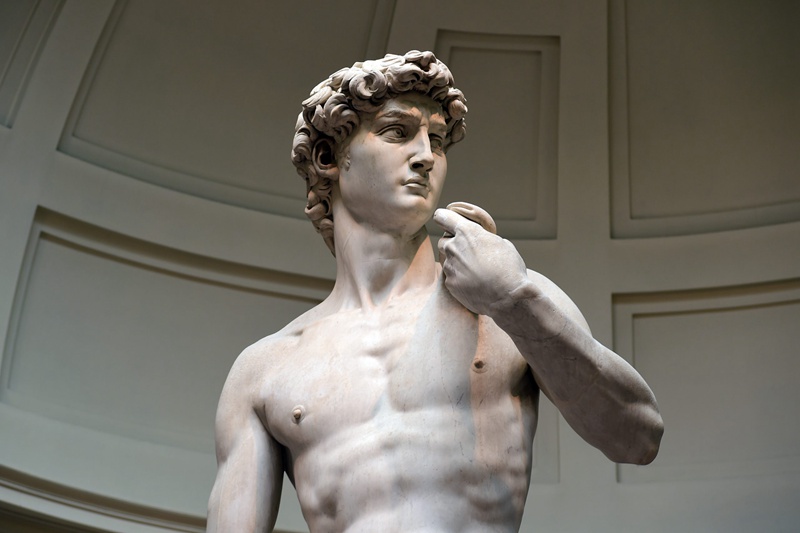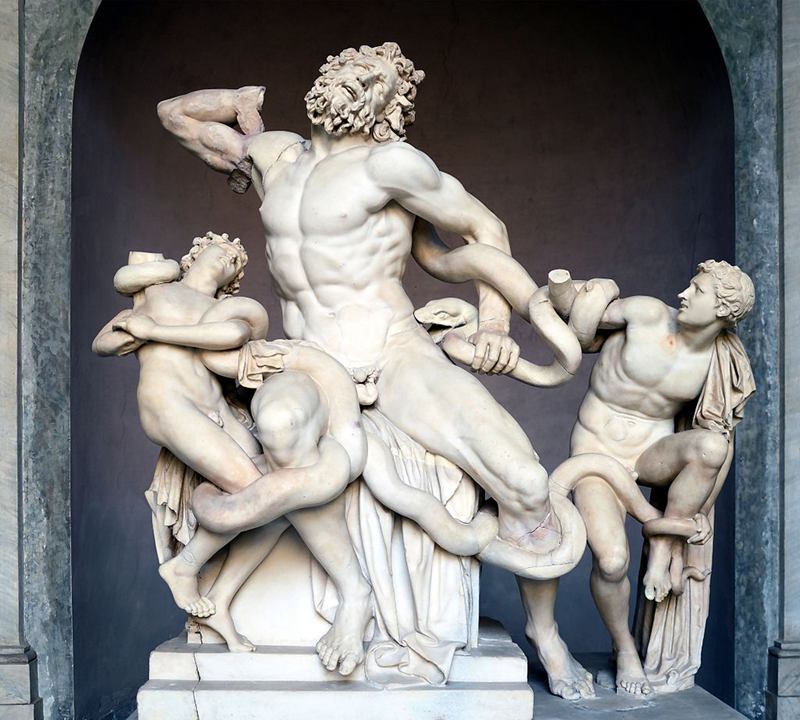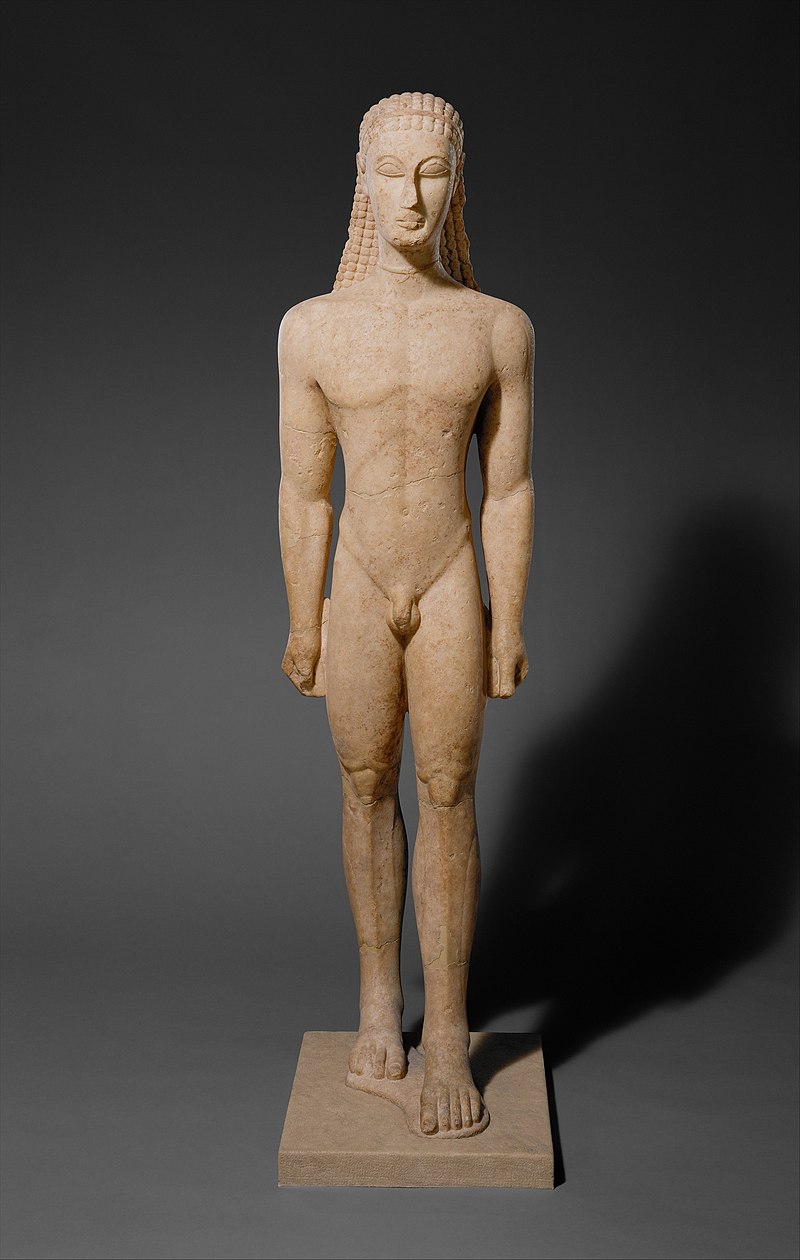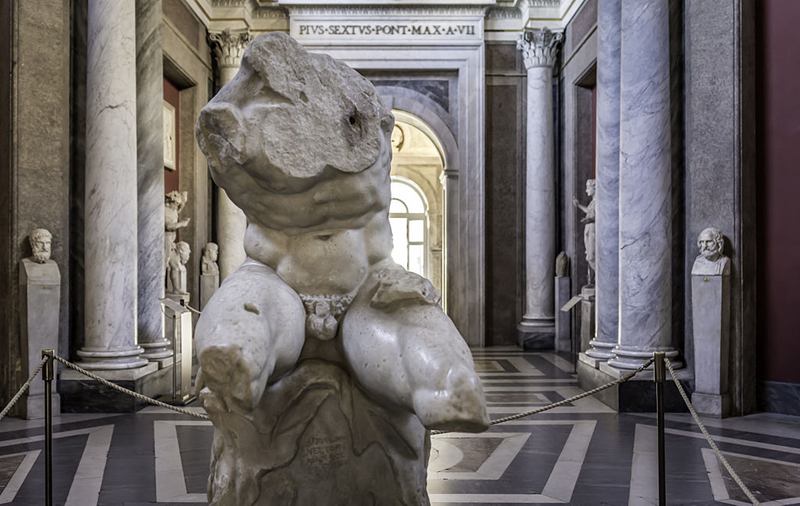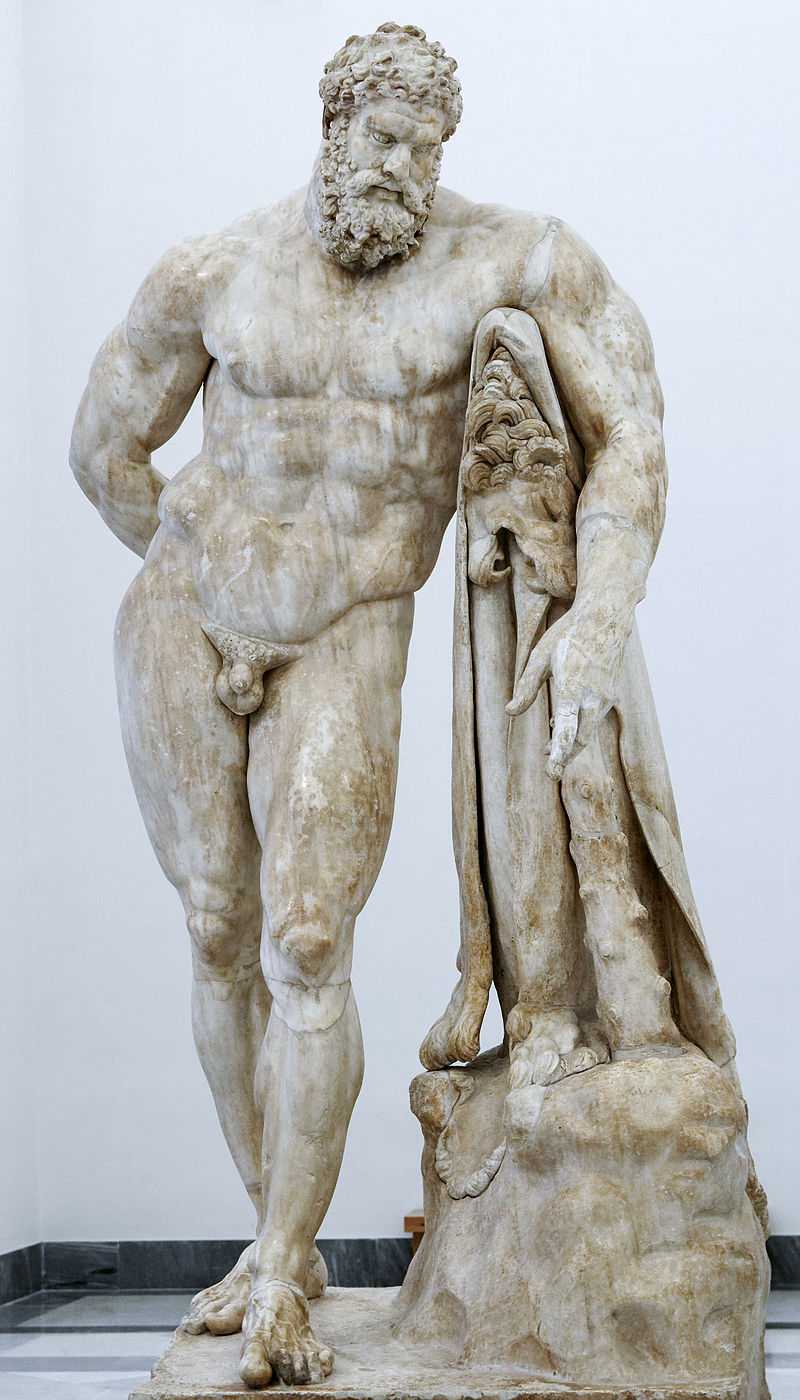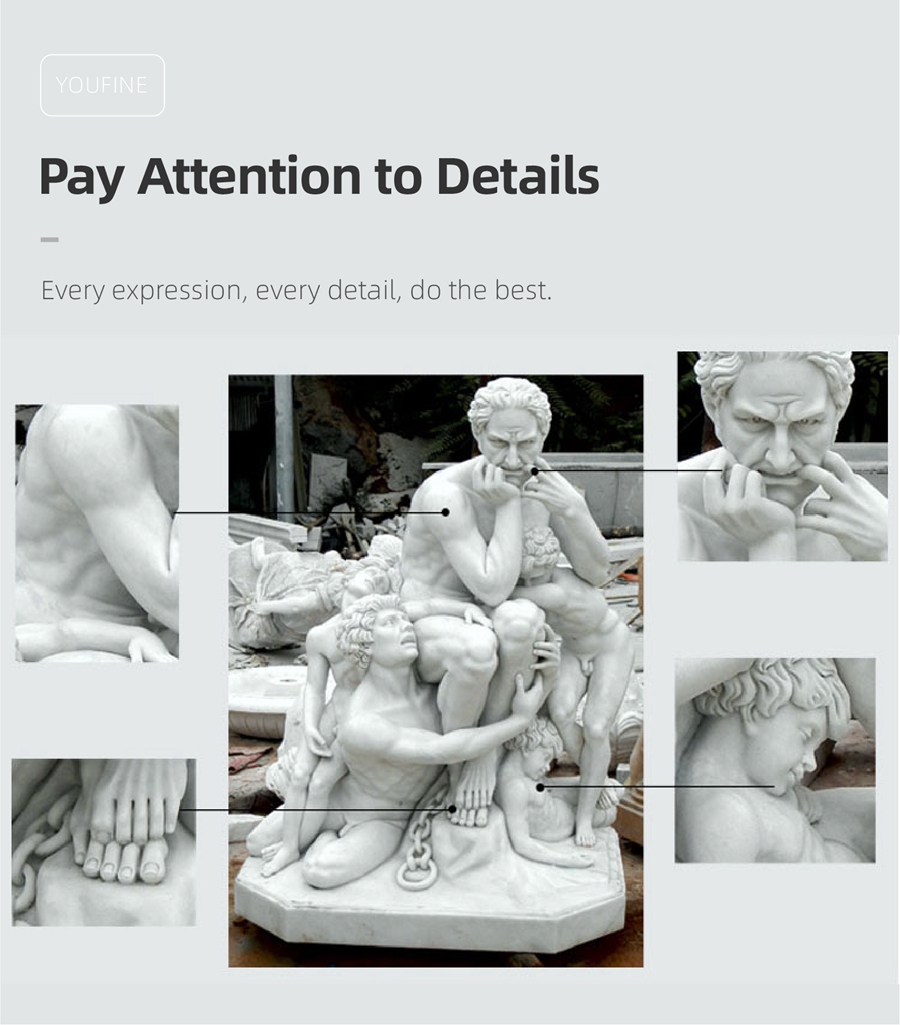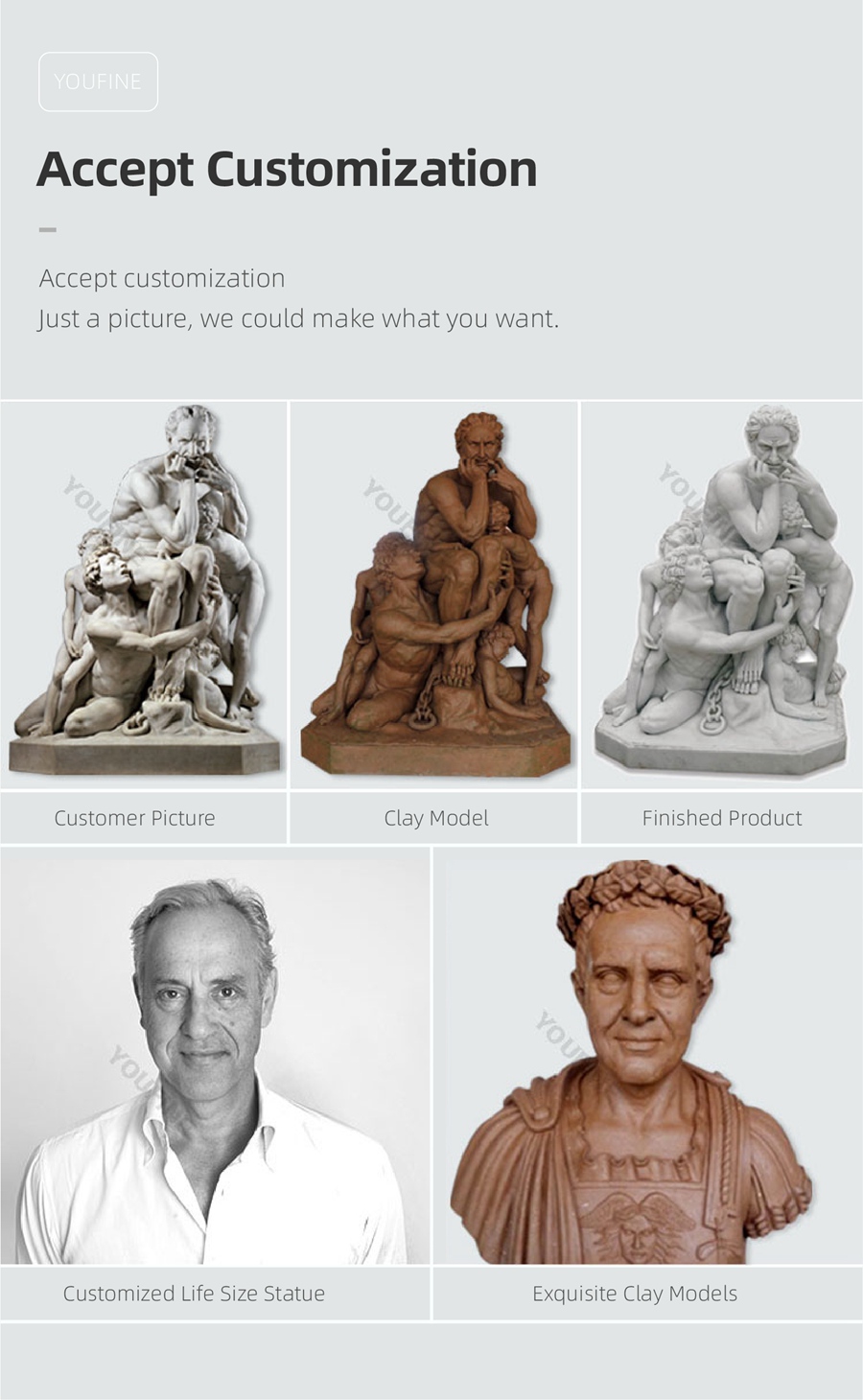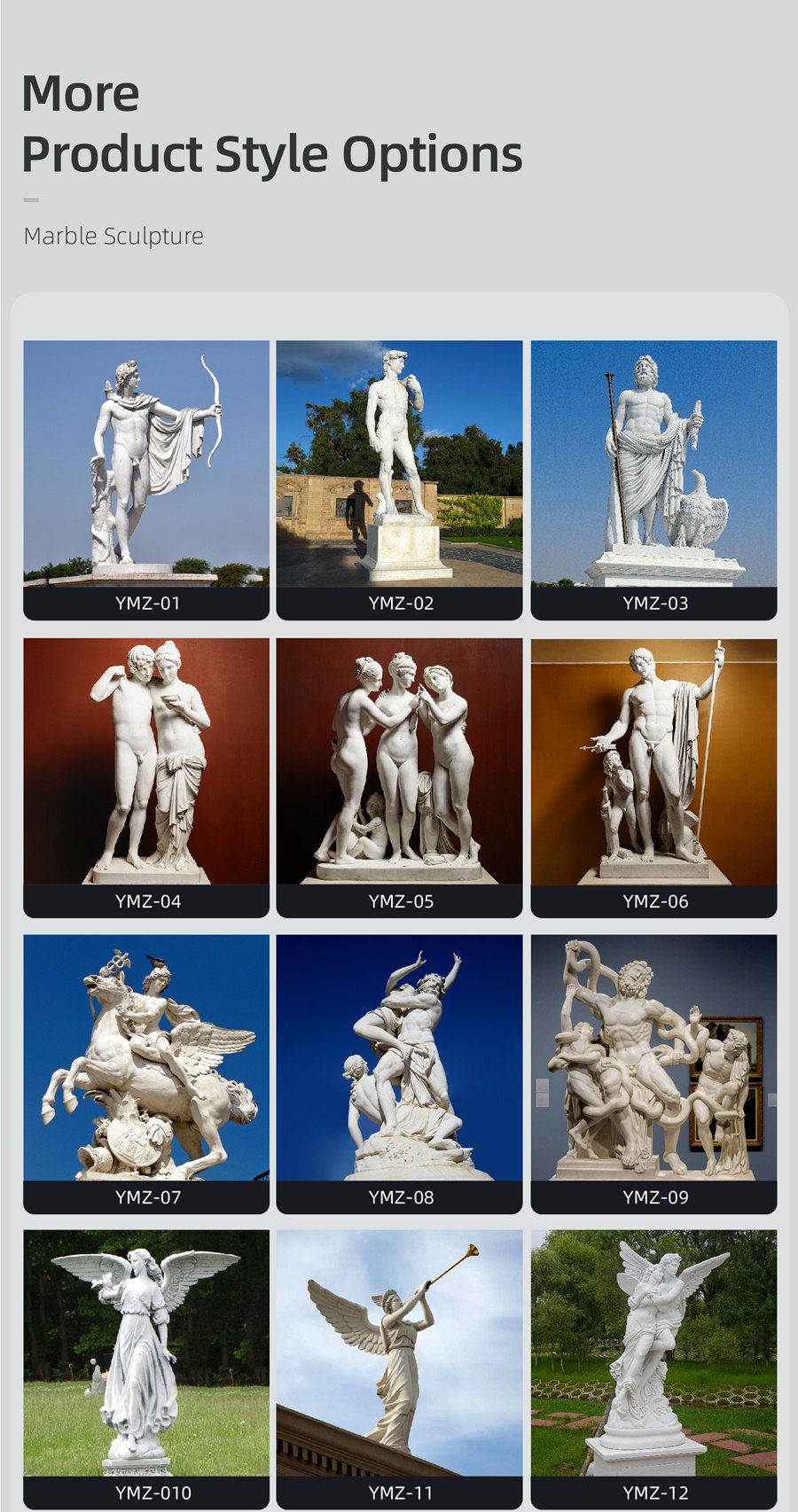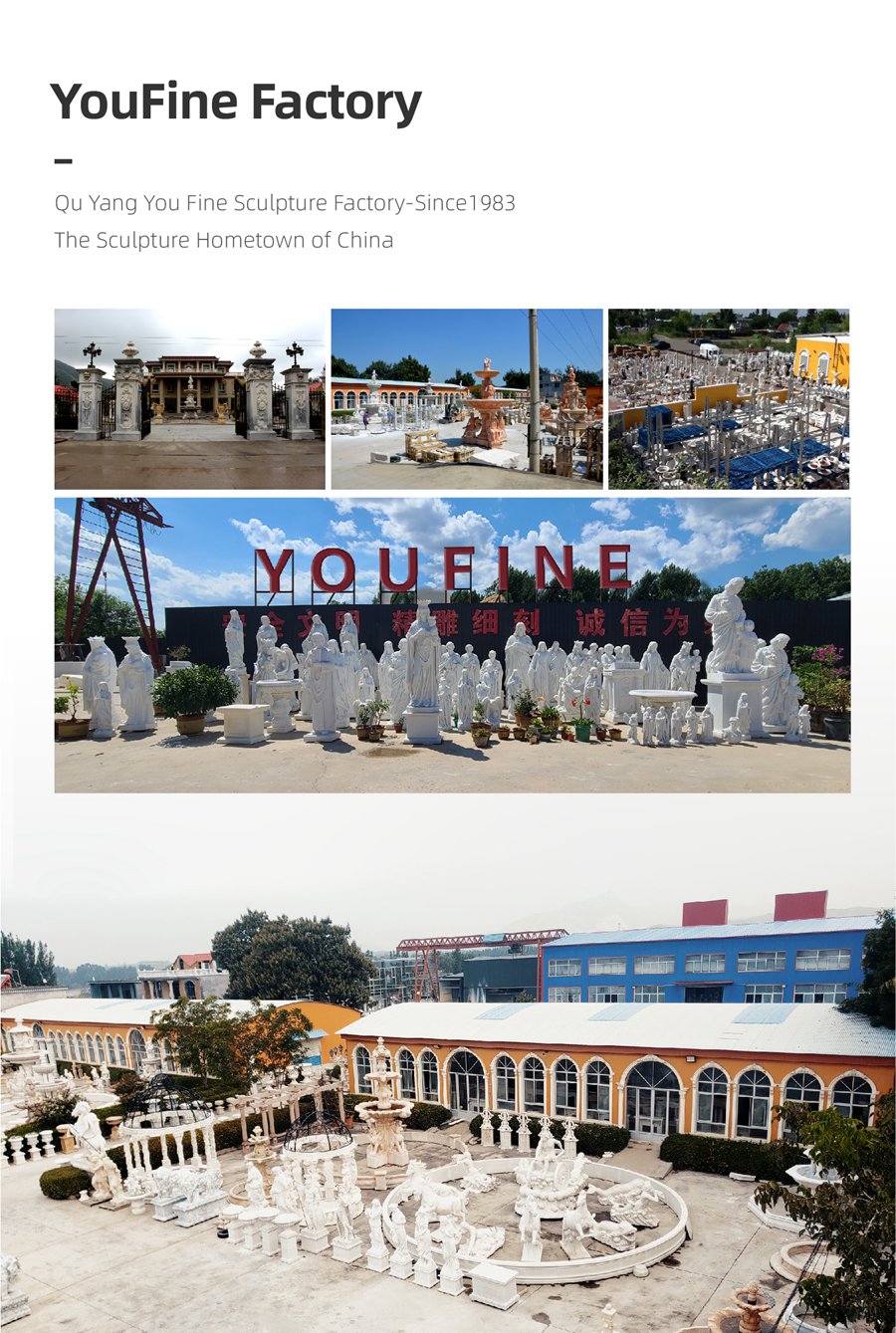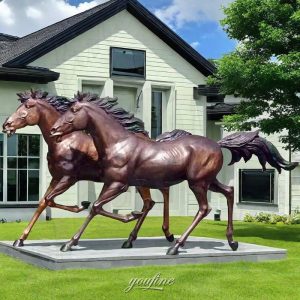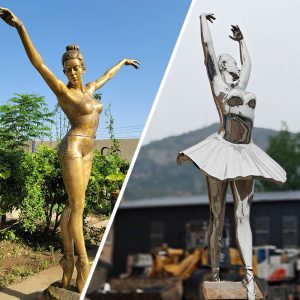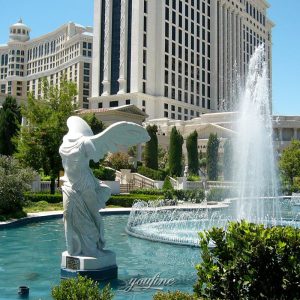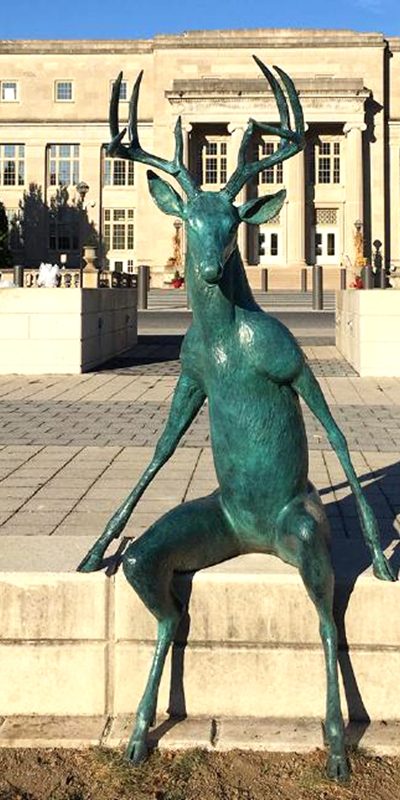Sculpture is an excellent storytelling medium, creating a higher personal connection with the masses. One of the biggest reasons for the popularity of marble sculpture is its appeal to the viewer. For many, the tools and techniques used in sculpting are a fascinating process.
Marble statues are soulful works of art as they provide 3D visualization and the finest edges that greatly influence the structure of the artwork. Some artists create works beyond imagination, they always ask a question in our imagination, “How is it possible to carve such fine lines in marble”.
Today, let us witness some fascinating statues in the history of carving.
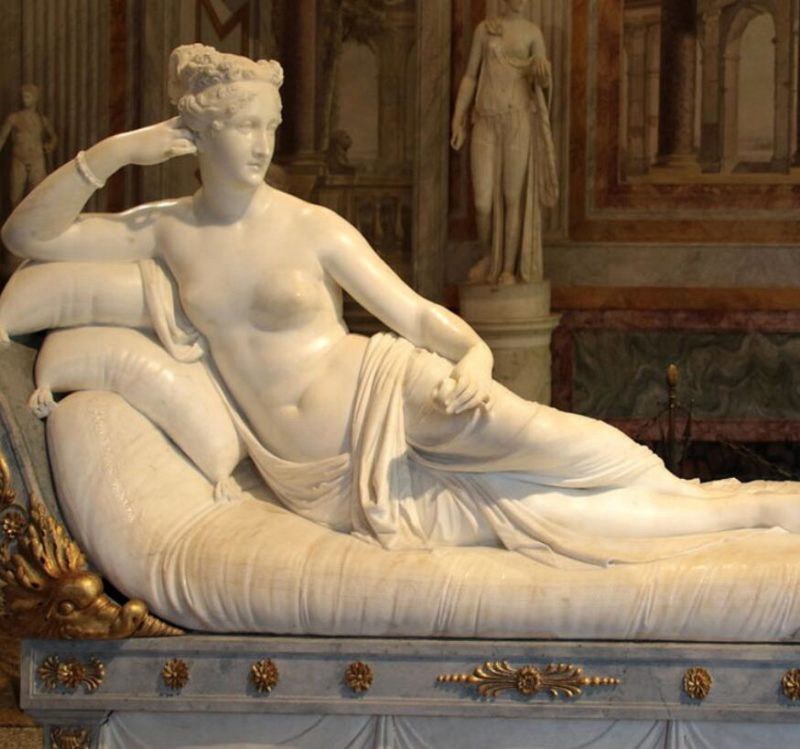
1.Venus of Milo
Venus of Milo, also known as Aphrodite of Milos, Venus of the Broken Arm, is a famous ancient Greek statue. Created between 150 and 125 BC, this statue represents Aphrodite, the goddess of love and beauty in Greek mythology (its counterpart in Roman mythology is Venus). The marble statue is 204 centimeters tall, slightly larger than the real size of a human body. It was discovered on the Greek island of Milos in 1820, so it is called Venus de Milo. In the past it was mistaken for the work of the sculptor Praxiteles and is now generally attributed to Alexandros. Currently in the Louvre Museum in Paris, France.
The Venus of Milo is famous for her mysterious missing arms. The sculpture as a whole is made of two pieces of marble spliced together. The joint of the two pieces of marble is very ingenious, and it is adjacent to the exposed part of the body and the wrapping scarf. This statue of Venus is universally recognized as a model of female body beauty, because she completely conforms to the golden ratio of human body beauty ratio. The ratio of the golden section is 1:1.618. Applying it to the human body is to divide the human body into upper and lower parts, and the dividing point is located at the navel.
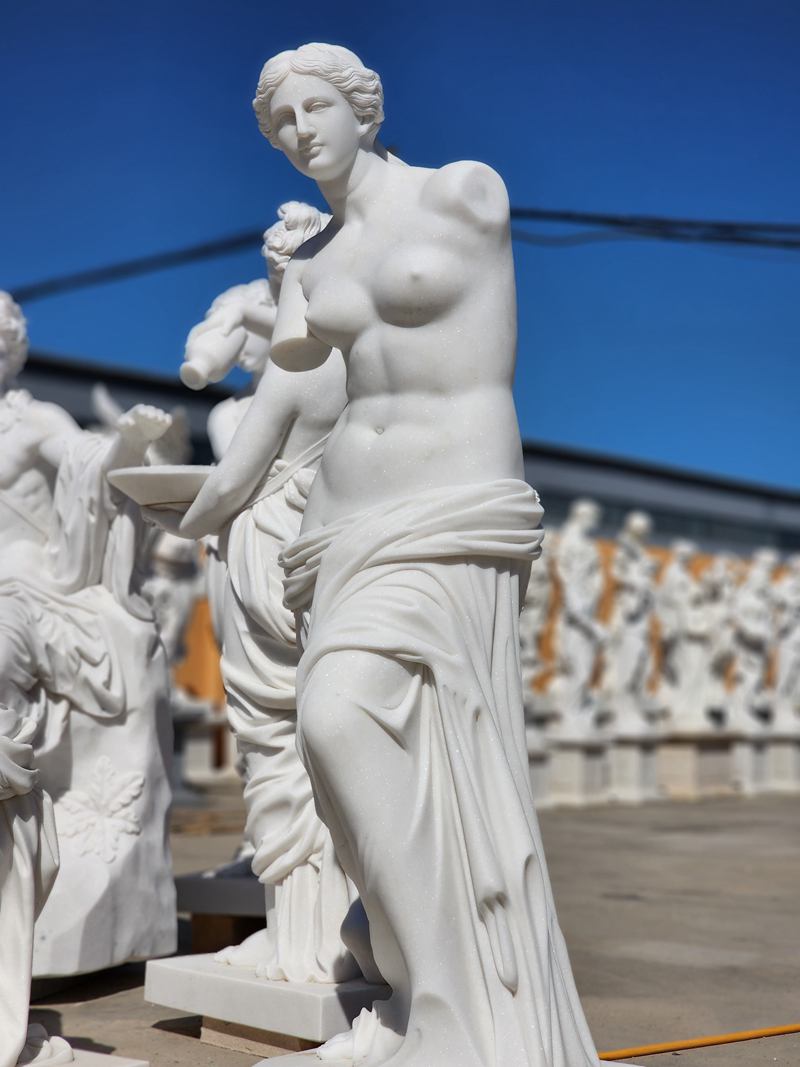
2.David
Between 1499 and 1501 Michelangelo returned to Florence. The Wool Guild commissioned Michelangelo to create a colossal David as a symbol of Florentine liberty, which was placed in the Piazza della Signoria in front of the Vigilio Palace when it was completed. Marble provided by the Guild, which was used by Agostino di Duccio 40 years ago. In 1504, Michelangelo completed the statue of David. This outstanding masterpiece highlights Michelangelo’s extraordinary technique and outstanding imagination, establishing his status as a sculptor.
Michelangelo’s David depicts David before the battle. The face of the statue is determined, the head is turned to the left, and the tendon of the neck is raised, as if it is preparing for battle. The muscles around his upper lip and nose tense, and his eyes are focused into the distance. The veins protrude from his drooping right hand, but his body is indeed in a relaxed posture, with the weight on the right leg, the right hand holding the stone, the left hand bent forward, and the slings resting on the left shoulder. The tense look on his face was in sharp contrast to the relaxed posture. It means that he has just made a decision to fight, but he has not yet set foot on the battlefield.
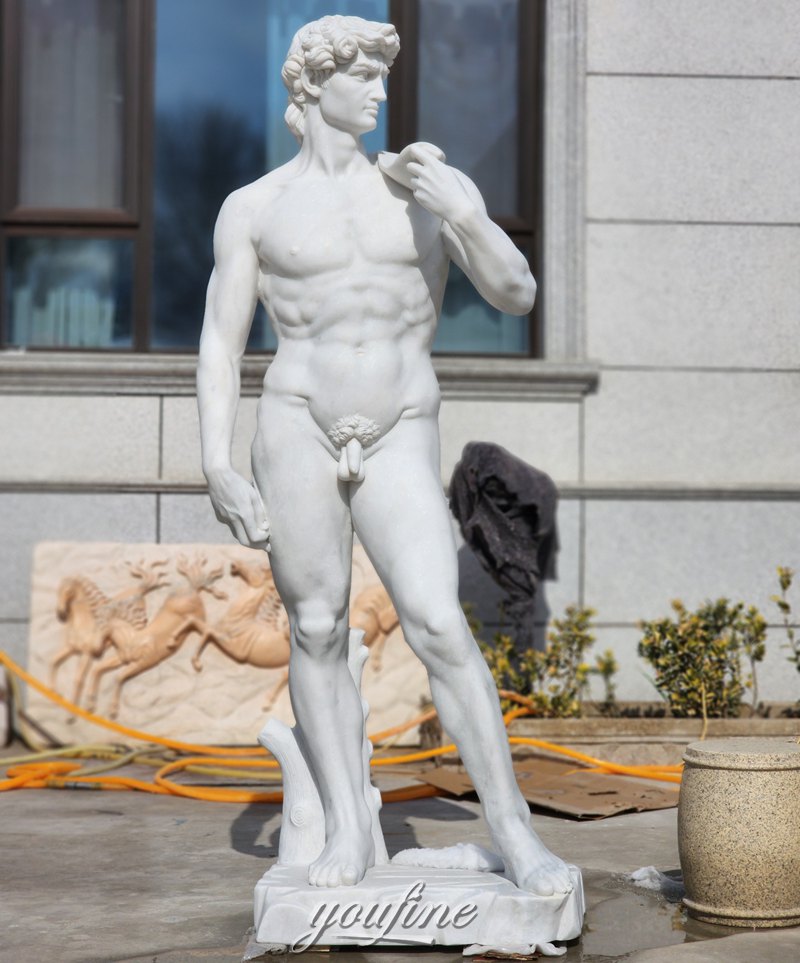
3.Laocoön And His Sons
Laocoon and Sons, also known as the Group of Laocoon, is a famous marble statue now in the Vatican Museums. According to the ancient Roman writer Pliny the Elder, the statue was created by three sculptors from Rhodes: Agesander, Athenodoros and Polydorus. It shows the scene of the Trojan priest Laocoon and his sons Antiphantes and Thymbraeus being entangled by sea snakes to death.
The story is about Laocoon and how he tried to find out how the Trojan Horse was made. It is said that when the priest’s sons discovered his plan to uncover a ruse to help the Greeks get into Troy, they killed him.
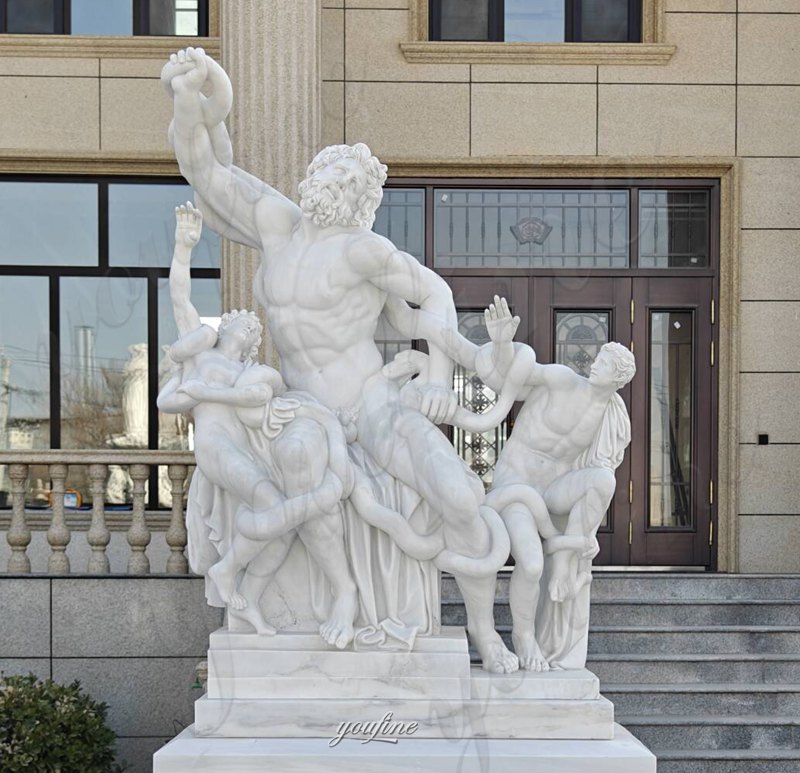
4.Pietà Statue
“Pieta” (Italian: Pietà), is a sculpture created by Michelangelo at the invitation of the French cardinal in 1497. It is also Michelangelo’s famous work. The theme of the story comes from the “Bible”, depicting the situation of the Virgin Mary in great grief when she embraced the crucified Christ. Christ is lying between the Virgin’s knees, with a scar on his ribs, his head hangs back, and his right arm rests on the Virgin’s right knee. The Virgin’s face looks very young, wearing a robe and cloak, with her left hand stretched back, and her right hand holding Christ. Michelangelo went against tradition and portrayed the Madonna as a young girl.
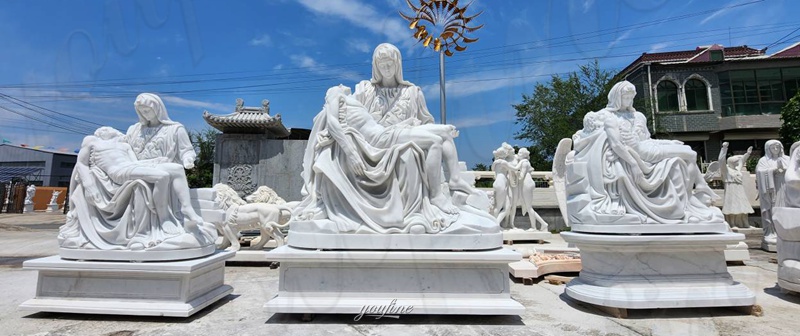
5.Moses Statue
The statue of Moses was sculpted from a single block of marble by Michelangelo in 1515, when he was forty years old, as one of many sculptural elements in a long-running ambitious project called the Tomb of Julius. The tomb of Julius is the greatest sculpture of its time, and Pope Julius II was one of the greatest patrons of the arts of all time. This monument undoubtedly influenced Julius II and Michelangelo’s conception of Julius’s tomb. The tomb will provide a magnificent monument to Julius’ life.
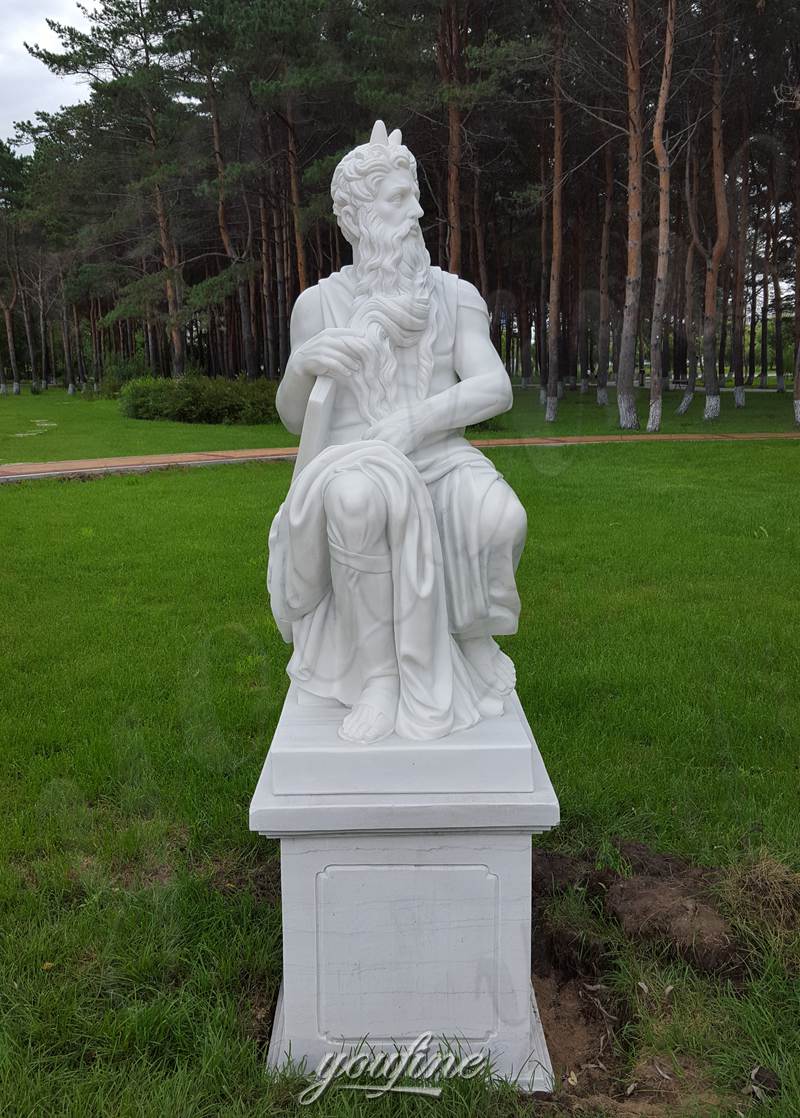
6.Lucius Verus bust Metropolitan
This head fragment is from a very large portrait bust or statue of Lucius Verus, co-emperor with Marcus Aurelius. At the beginning of his reign, Verus was sent east to direct a military campaign against the Parthians, and although the war was successfully concluded in 166 AD, his returning troops brought back a plague that ravaged the empire for several years. Ancient texts have compared him to Marcus Aurelius, but the portrait shown here has a leonine majesty that in no way suggests he was an idle, dissolute ruler. This is typical Antony style, using ornate diamond ornaments in the hair and sculpted eyes to dramatize the basic naturalistic image.
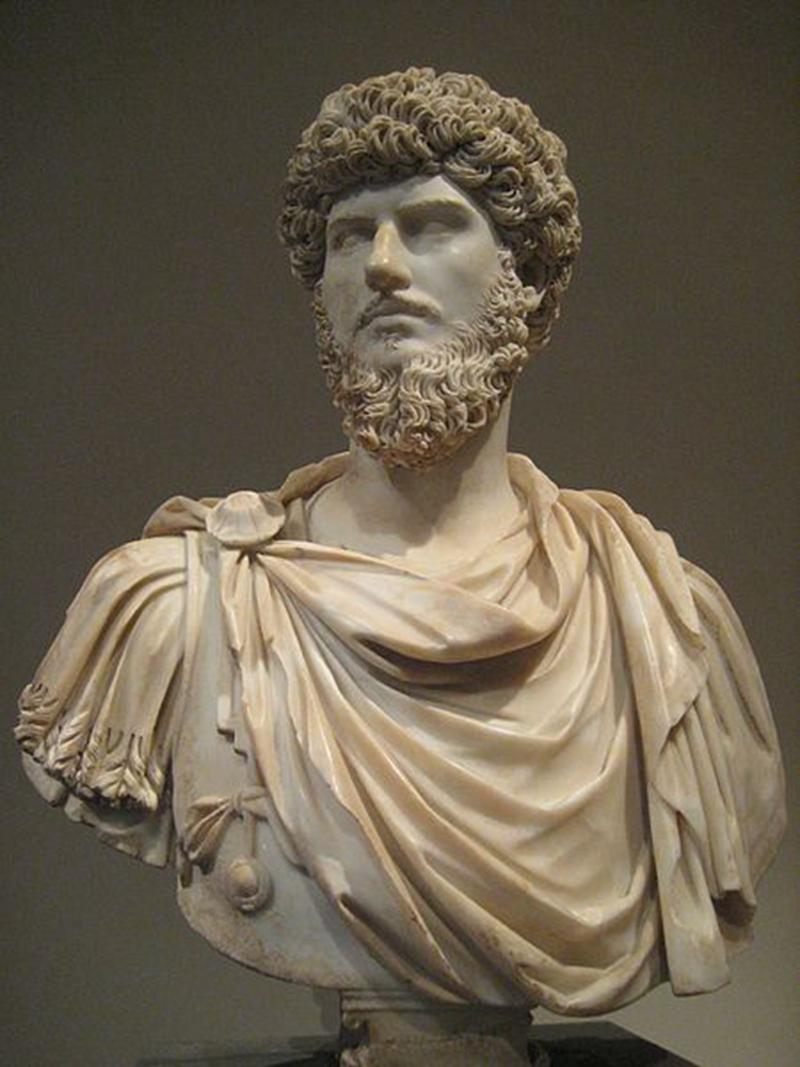
7.Cupit Kindling the Torch of Hymen
The marble group Cupid Lighting the Torch on the Hymen was made in England by George Rainey circa 1997. In 1831, Cupid, the god of love, held the torch of Haimen, the god of marriage, here. This classic theme is typical of Rainey’s work. In the 1820s, he studied under Bertel Thorvaldsen in Rome, and was deeply influenced by the style of Danish sculptors, echoing ancient Greek sculpture. Rainey supported the establishment of the Government School of Design in the 1840s, the predecessor of the Victoria and Albert Museum.
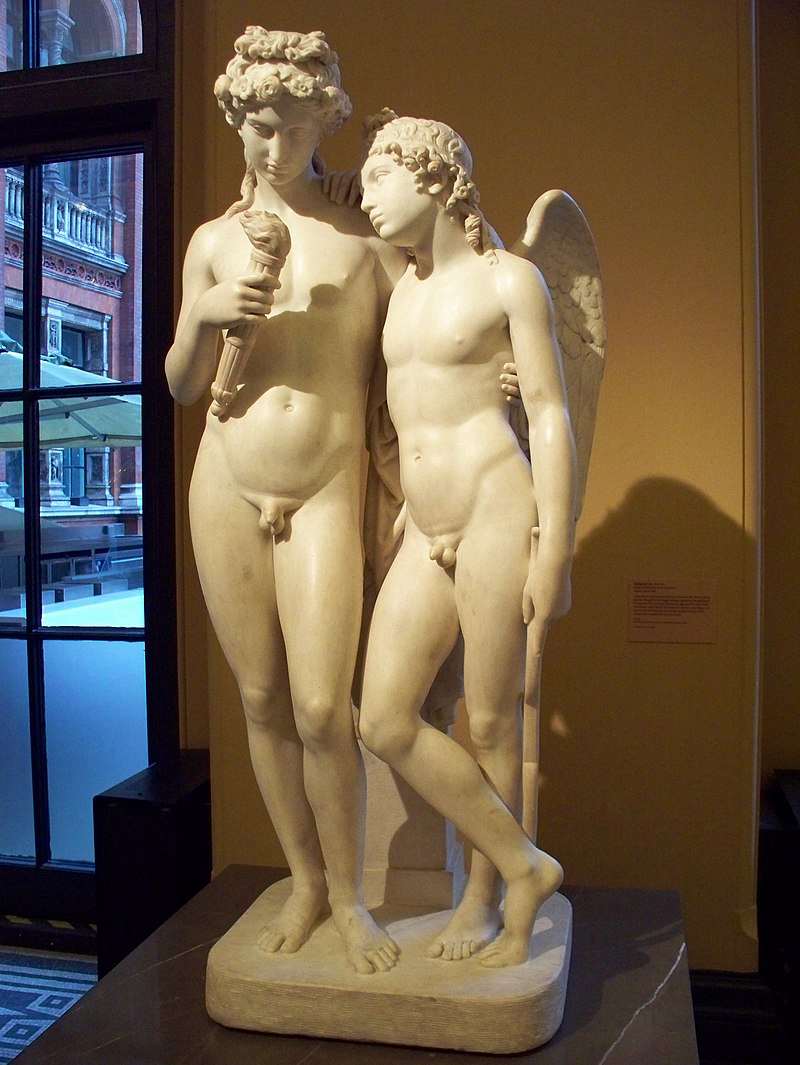
8.Discobolus
Known as the Myron Discus Thrower or Discus Thrower, the statue is thought to have been carved between the 4th and 5th centuries BC. in Greek history. The first copy of this famous work was unearthed in 1781 and is thought to be a copy of a sculpture carved by the Athenian artist Myron during his heyday in the 5th century BC. After the discovery of this particular statue, further variants were discovered.
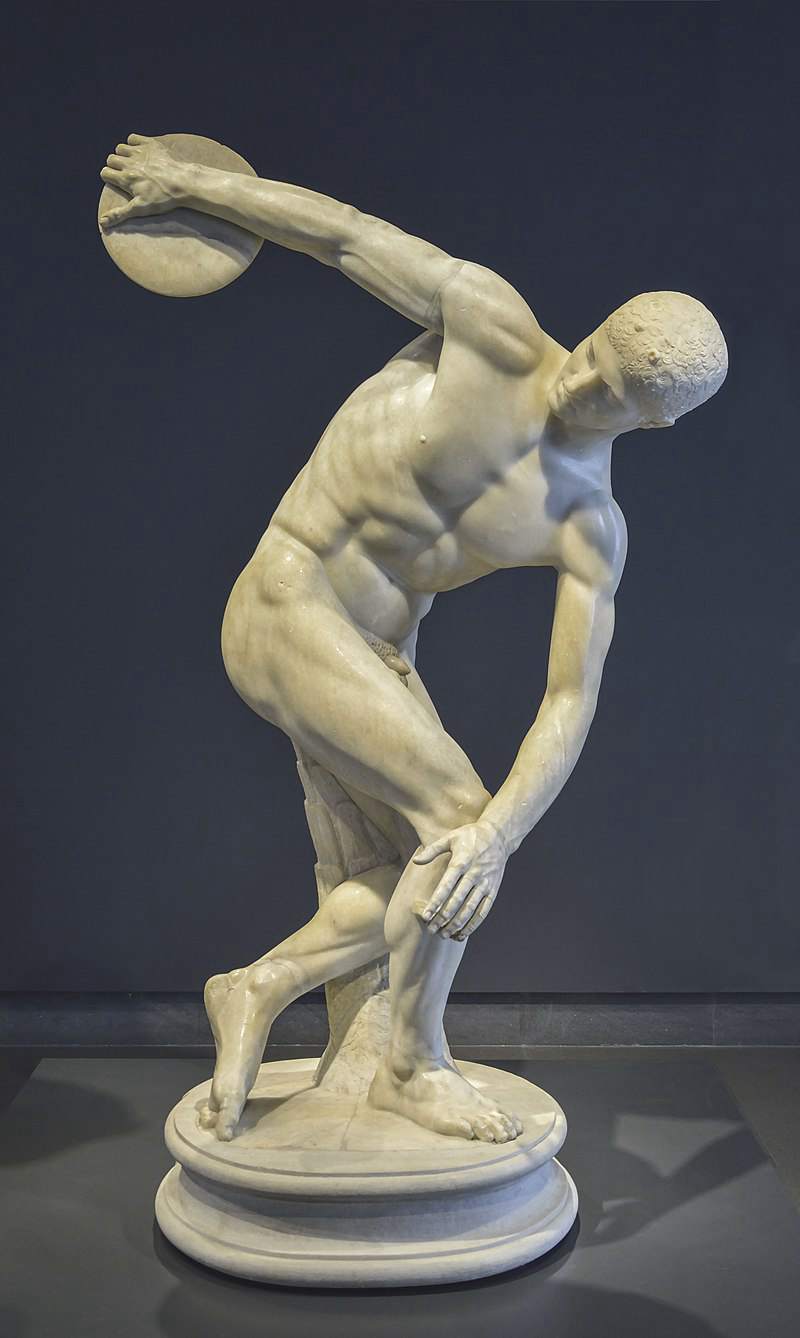
9.Nike of Samothrace
The Wings of Victory of Samothrace, or Nike of Samothrace, is a wishing monument originally discovered on the island of Samothrace in the northern Aegean Sea. It is a masterpiece of Hellenistic Greek sculpture dating back to the early 2nd century BC. It consists of a statue representing the goddess Nick, with her head and arms missing, and a plinth in the shape of a ship’s prow.
The total height of the monument is 5.57 meters including the base; the statue alone is 2.75 meters high. The sculpture is one of the few surviving originals of major Hellenistic statues rather than Roman copies. Since 1884, Wings of Victory has been on display at the top of the main staircase of the Louvre Museum in Paris.
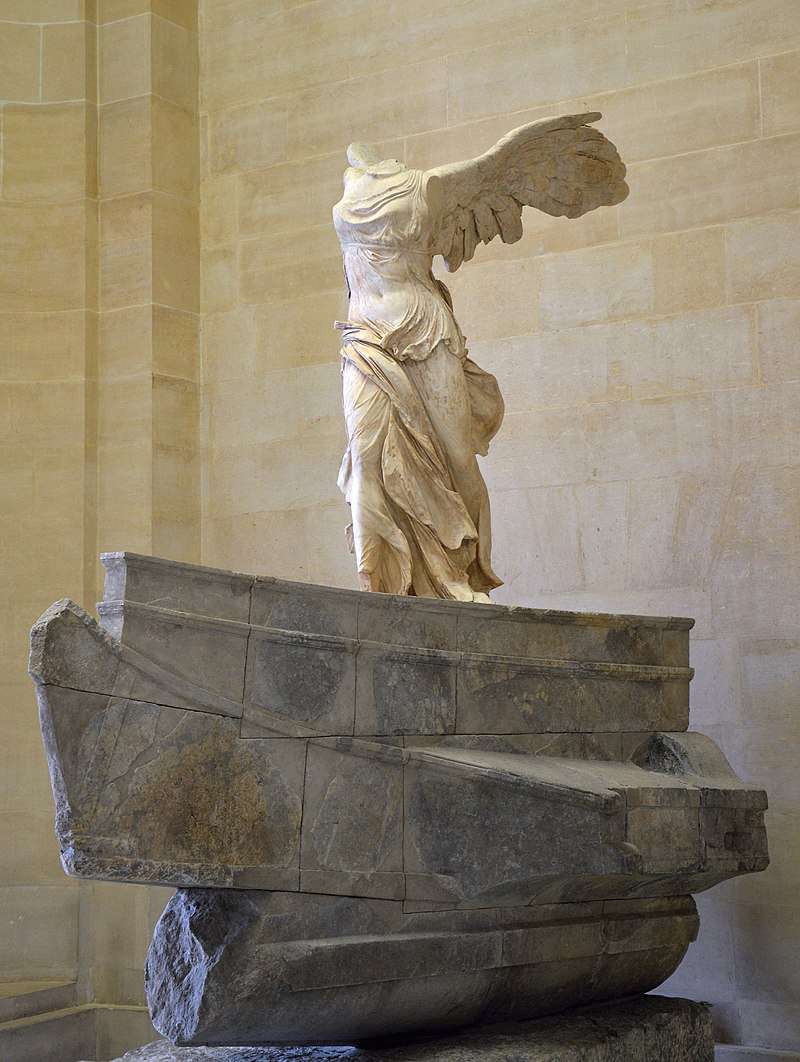
10.Venus de’s Medici
The Medici Venus or Medici Venus is a 1.53 m high Hellenistic marble sculpture depicting Aphrodite, the Greek goddess of love. This is a 1st century BC marble reproduction, probably made in Athens, of the original Greek bronze sculpture, of the type Aphrodite of Nidos, which was probably made by a sculptor in the direct Praxiteles tradition, perhaps towards the end of the century. It has become one of the waypoints for tracing the progress of the Western classical tradition, and references to it chart changes in taste and the course of classical scholarship. Now in the Uffizi Gallery, Florence, Italy.
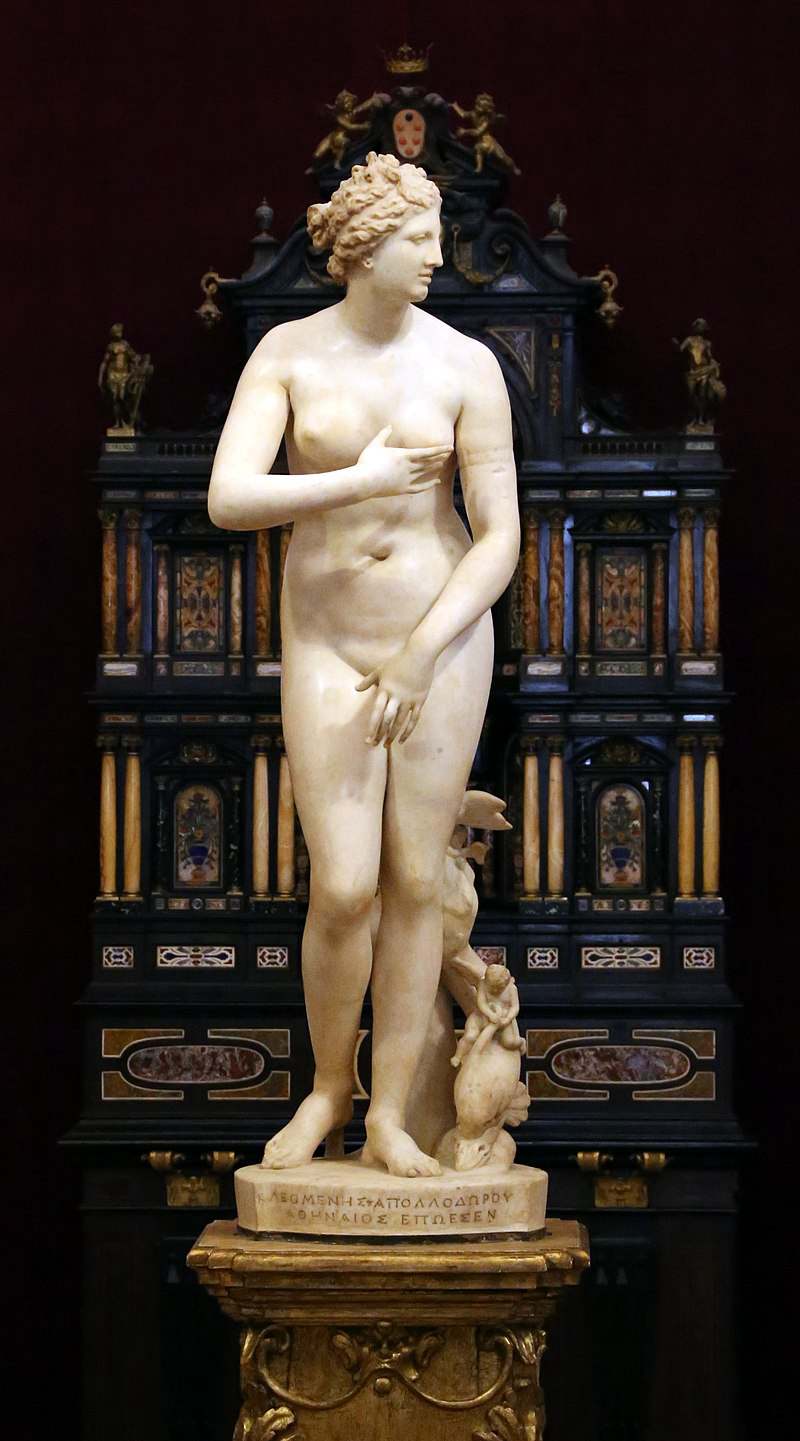
11.Augustus de Primaporta
The protagonist of the statue, Augustus, quickly rose to power after a century of civil war and became the first emperor of Rome. Augustus believed strongly in the importance of public art and used his patronage of the creative arts to support his newly established role of leadership. He commissioned some 70 portrait statues of himself. In general, they believe that his noble lineage can be traced back to Romulus, the founder of Rome. Dating to the 1st century AD, this marble sculpture was found in the ruins of the villa of Livia (wife of Augustus) in Prima Porta and is now on display in the Vatican. It emphasizes Augustus’ military power and references the Republic’s past golden age, which he claimed to return to during his reign.
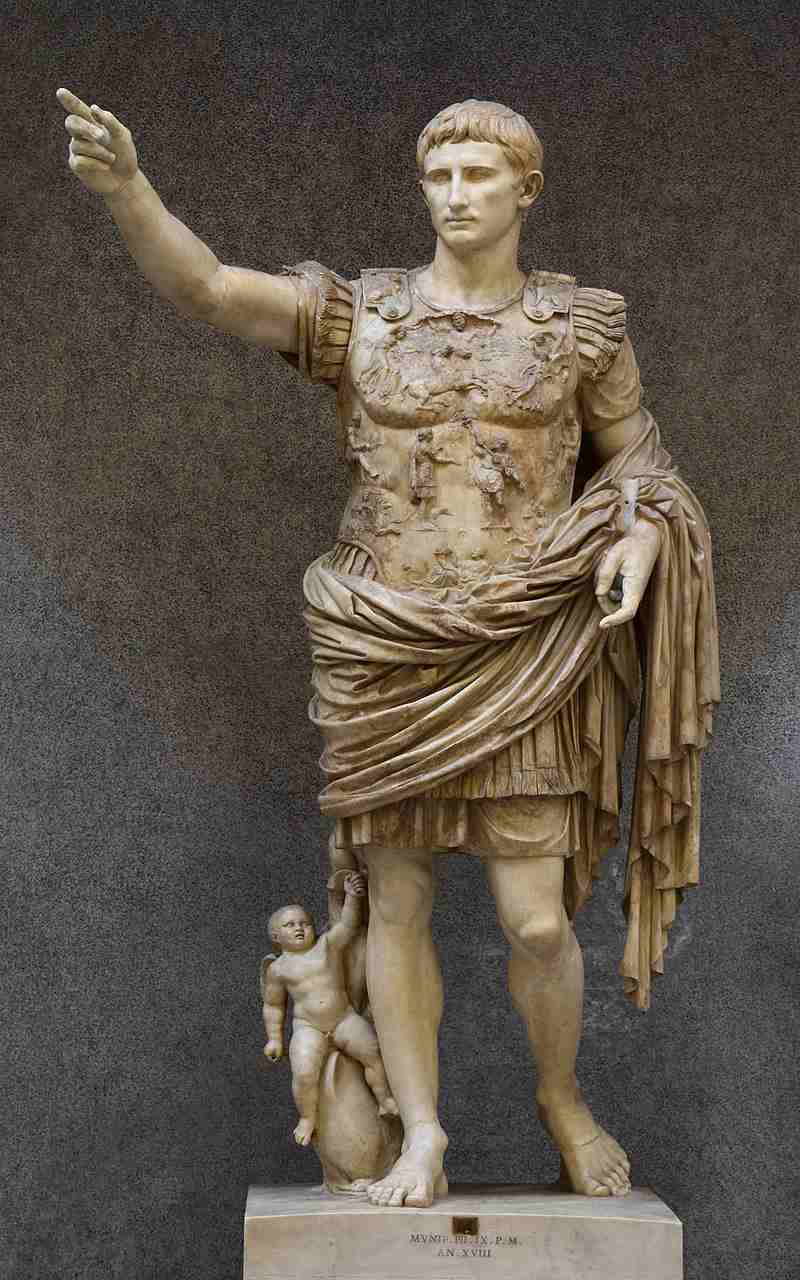
12.New York Kouros
Kouros of York is an early example of Greek life-size statues. The statue of the Greek youth Chloos was carved at Attica, in an Egyptian pose, and otherwise separate from the block. It is named for its current location, at the Metropolitan Museum of Art in New York City. “The statue marks the tomb of a young Athenian nobleman,” the Metropolitan Museum of Art said in “The Marble Statue of a Young Man.”
13.Belvedere Torso -Apollonius of Athens
One of Rome’s most iconic sculptures, and one of the city’s most interesting works. The Belvedere Torso sculpture is a large marble sculpture over 1.5 meters high. The actual date of completion is uncertain, although many art critics and experts previously believed it could be as old as the first century BC. Many believe the monument to be Hercules, a legendary Greek and Roman figure known for his immense strength.
14.Dying Gaul
The statue is said to have been created between 200 BC and 350 BC. It is almost certainly a reproduction of an older piece that has been lost to history. This life-size white marble statue depicts an extremely lifelike nude Gallic soldier sitting on the ground with his lower chest wounded by a sword.
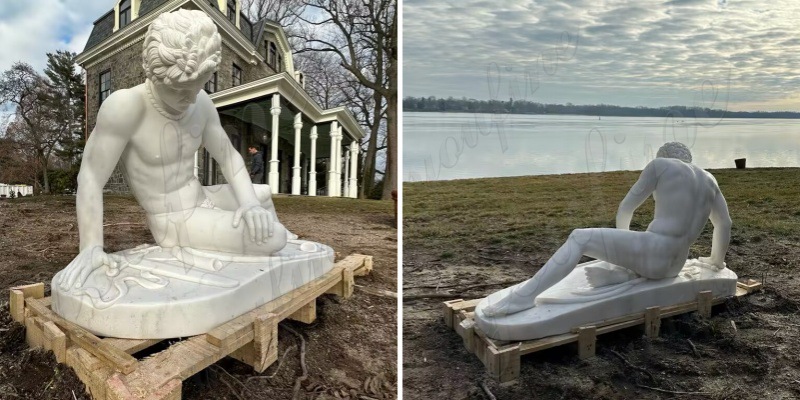
15.Farnese Hercules
Farnese Hercules is an ancient statue of Hercules, probably an enlarged copy made in the early third century AD, the enlarged copy was made for the Roman Baths of Caracalla, where it was discovered in 1546 and is now in the National Archaeological Museum in Naples. The heroic Hercules is one of the most famous ancient sculptures and fixed the image of the mythical hero in the European imagination.
Hercules is depicted as a moment of rest. Leaning on his rough club covered with the skin of the Nemean lion, he held in his right hand the golden apples he had stolen from the Hesperides, hiding them behind his back.
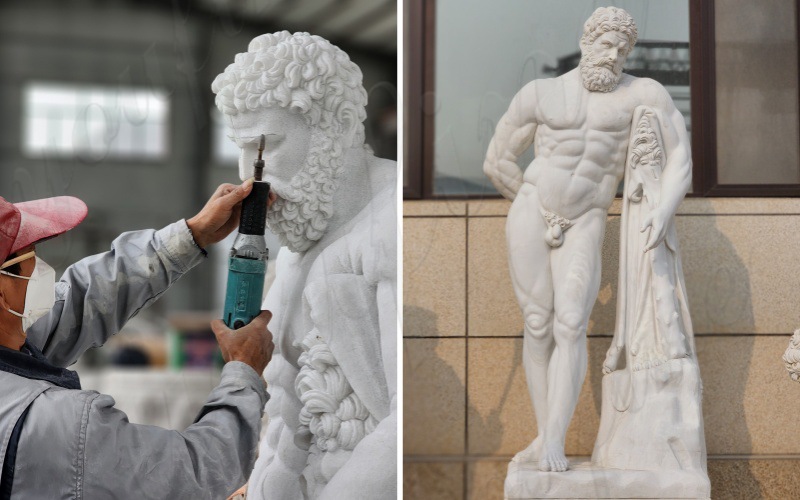
In short, marble sculpture is the medium of story and the carrier of art. It is an amazing thing for an artist to sculpt passionate works of art through the cold material of marble. Therefore, many people like to collect replicas of famous statues and place them in their homes, which play a decorative role, enhance the artistic atmosphere of the whole family.
What YouFine Can Do for You
YouFine’s artists have the ultimate pursuit of details in marble statues. Each of them has an average of 20 years of sculpting experience. It’s like God kissed their hands, and they can restore 99% of the details of classic statues for you.
YouFine provides customized marble statue for sale services and is able to provide sculptures of different sizes, colors, and designs for different customers.
YouFine has 40 years of marble carving experience and is committed to realizing each customer’s marble sculpture vision. Customers’ smiles are YouFine’s biggest motivation.
If you are interested in replicas of famous marble statue replica for sale, you can contact YouFine at any time, they can provide you with high-quality and collectible marble statue artwork.
